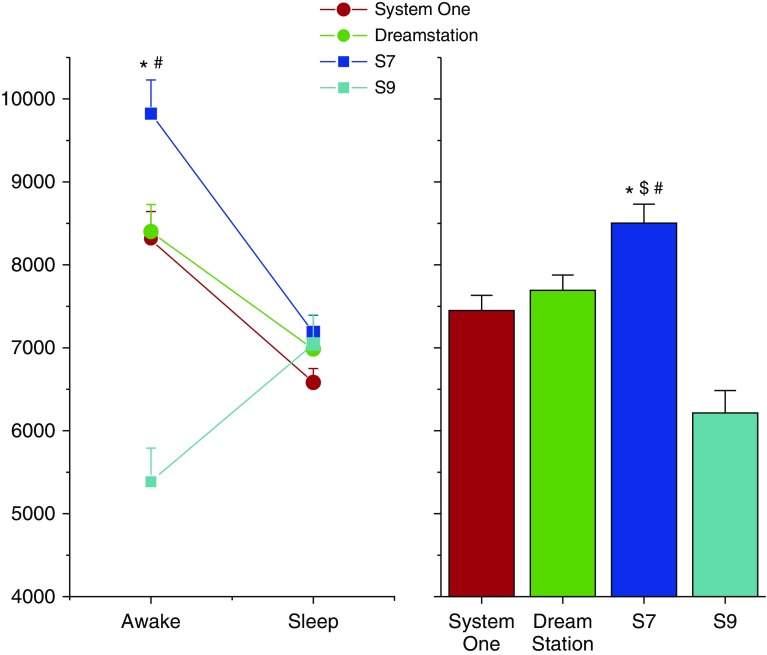Figure 1.
e by sleep–wakefulness state (left panel) and e for the entire night (right panel) are plotted for nights when undergoing laboratory-based polysomnography performed while receiving four different ASV devices: ResMed S7 VPAP Adapt (S7 device), a later version of the S7 device (ResMed S9 VPAP Adapt; S9 device), a Philips ASV device (System One), and an updated version of the Philips ASV device (Dreamstation). Mean and SE bars are plotted. Note that e for most devices was greater during wakefulness when compared with sleep. Also, the greatest e is during wakefulness while receiving therapy via the S7 device. There was no order effect for randomization sequence with regard to the e findings. *P < 0.05 when compared with Dreamstation device; #P < 0.05 when compared with S9 device; and $P < 0.05 when compared with System One. ASV = adaptive servo ventilation.

